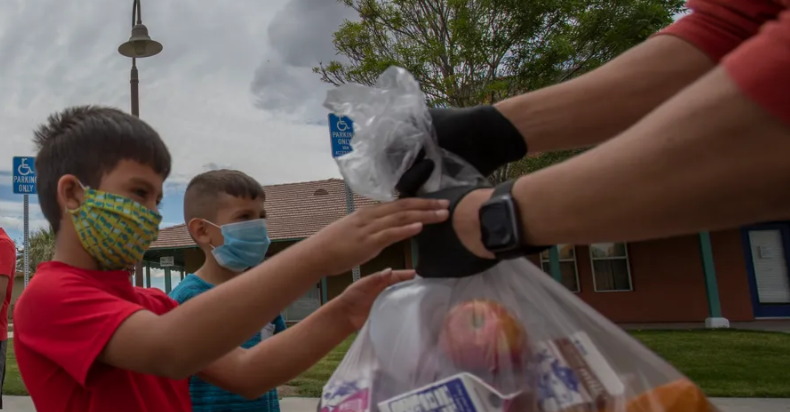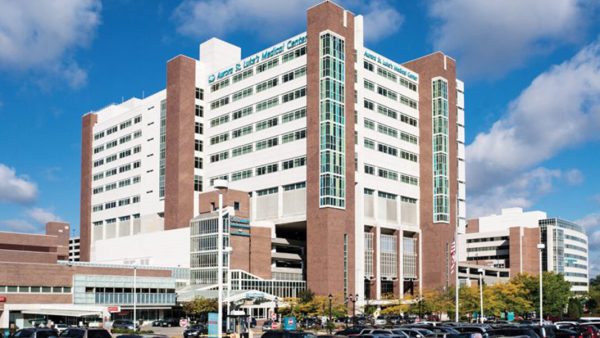How Exactly is the Pandemic Impacting Low-Income Students?
January 22, 2021
This school year has been hard for many students, teachers, and staff members alike. However, among those, there is one group that the odds have been stacked against: low-income students and students of color.
Many low-income students have had to drop out or miss class because they could not get access to the internet. Student attendances have plummeted all over the United States, in all grades. But Greendale School District is doing whatever it can to make sure all students can be successful.
“Greendale Schools has always made an effort to ensure that all of our students have an equitable educational experience. The district has taken steps to ensure all students have access to the learning tools they need at all times,” Director of Equity and Instruction Maggy Olson said. “This started back in 2015 when the Ready Access program launched to give everyone access to a Chromebook (or iPad for the little ones). During the pandemic we have offered hotspots to families with inconsistent internet access and streamlined the tech support process to make it easier to get help if tech devices aren’t working as they should be.”
Unfortunately, not all schools in the country have offered the same internet access to students. In a Washington Post article written by Heather Long and Danielle Douglas-Gabriel, it states, “In August, Paige McConnell became the first in her family to go to college — and the first to drop out. McConnell, 18, could not make online classes work. She doesn’t have WiFi at her rural home in Crossville, Tenn. The local library turned her away, not wanting anyone sitting around during the pandemic. She spent hours in a McDonald’s parking lot using the fast-food chain’s Internet, but she kept getting kicked off her college’s virtual classes because the network wasn’t “safe.” Two weeks after starting at Roane State Community College, she gave up.”
McConnell is not alone in her situation. Schools have reported drops in attendance ever since the pandemic began. Low-income students have had a lot to deal with these last few months. On top of students missing class and falling behind, their families now have to worry more about paying bills and feeding their children. They were struggling before the pandemic and now, it is infinitely worse.
“I believe that the pandemic has disproportionately impacted those who live in poverty. Food hardship, high rates of unemployment, worries about how to pay for necessities and rent, all have caused significant stress on families,” school social worker Trisha Kilpin said. “Isolation, contact restrictions, changes in home and school routines, access limitation to community supports, and other pandemic-related stressors have changed the way schools and families function.”
Before the pandemic, sometimes the only times students got to eat was at school and now that is gone. One way Greendale is helping its low income students is offering free lunch. “It’s hard to know exactly how the pandemic has impacted low income students in particular mainly because we don’t necessarily know who those students are, but a couple of examples include making lunch available to students who previously had qualified for free or reduced lunch,” school counselor John Bly said.
Restaurants have also stepped up in multiple cities across the country, offering free meals to students. Although parents may have an opportunity to feed their children, they might not be so lucky with their homes. Many families are clinging to the eviction moratorium to stay in their homes. The Eviction moratorium prevents landlords from evicting their tenants from their homes. It was originally set to expire January 1, but Trump had signed a bill to keep tenants in their homes for another month. On Jan. 21, when President Joe Biden was sworn in, he signed an executive order that extended this to March 31st.
In a CNN article written by Bianna Golodryga and Yon Pomrenze, it focuses on the Robla School District in California. In the article they interview Laurie Butler-Echandia and Elisa Olmo, who often go out and try to find families whose students are not attending school. “Butler-Echandia said the most challenging days were when she seemed to get nowhere. ‘It’s when the families aren’t there. That’s the hardest, which happens quite a bit,’ she said.”
In the article they also interview the Robla School District Superintendent Ruben Reyes, who said that he was very concerned about the 10% of students who were regularly missing class, “Families who were just gone — the instability of poverty is a big part of this — so they were there, and now they’re not.”
It’s not just the short term effects people are worried about. While low income students are dealing with a lot right now, many are worried about lasting impacts.
“We are all experiencing trauma. During and after traumatic events, survivors experience a broad range of initial reactions and the potential for long term, enduring stress reactions. Some of us, those who are already disadvantaged and marginalized, are impacted at a disproportionately high rate,” Kilpin said.
Many scientists are worried about the mental health impacts of COVID-19, especially for those with pre-existing mental health disorders. In an article from BBC, by Maddy Savage, it describes scientists fears about the lasting impacts. Savage points out how Australia’s Black Dog Institute is concerned about “a significant minority who will be affected by long-term anxiety”. In the article it also says that a group of leading public health specialists from the British Medical Journal are afraid that “the mental health impact of the pandemic is likely to last much longer than the physical health impact”.
Nevertheless, many people try to keep hopes high and help others push through this tough time. “Our goal is to create trauma informed schools where children, staff and caregivers recognize and respond to the impact of traumatic stress positively,” Kilpin said. ”We can mitigate the effects of trauma, and proactively build the capacity of our students to overcome future challenges, by prioritizing safety, connection, and emotional management skills. These actions will foster hope and an understanding that we can get through hard times and that things will get better.”










